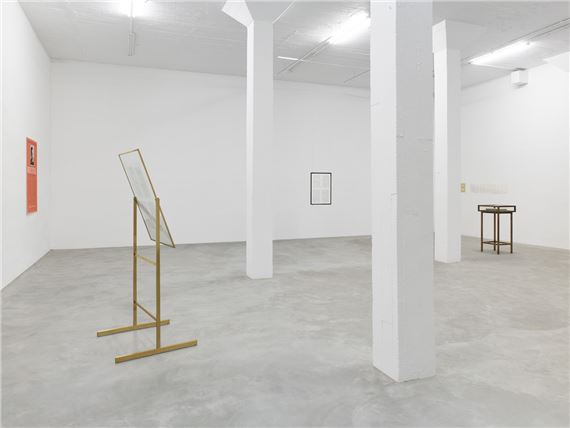Sumptuous Allegories of Nothingness. The book adaptations of Rodney Graham
Sumptuous Allegories of Nothingness brings together the artworks by Rodney Graham (1949 вҖ“ 2022) that take the book as their starting point (and often end up again as books).
With a bibliophile sensitivity to the latitude offered by вҖҳworld literatureвҖҷ from the late 18th century onward, Graham begins to experiment with seemingly minimal but actually extreme adaptations of renowned books during the 1980s. What begins as the artistвҖҷs soft spot for prolonging books with the help of literary loops eventually gives way to a parasitic authorship in the form of pseudo reprints вҖ“ works made his own by claiming the writing. In books whose design he again models after other books, Graham not only takes on famous writers; he truly inscribes himself in their literature, in their voice and style.
Anton and Annick Herbert discover GrahamвҖҷs work during the 1980s through Yves GevaertвҖҷs publishing house. The Brussels-based publisher will вҖҳpublishвҖҷ works by Graham that transcended the book object; GrahamвҖҷs book adaptations after all do not limit themselves to the book volume. To meet the demands of exhibitions вҖ“ an uneasy context for art in the guise of a book вҖ“ the artist designs reading devices and book sculptures that transform his book interventions into unconventional reading experiences.
Sumptuous Allegories of Nothingness offers an opportunity to discover Rodney GrahamвҖҷs literary art practice during the 1980s and 1990s through the varied adaptations and presentations of one and the same source or bibliophile anecdote, whether it concerns Lewis Carroll, Ian Fleming or Richard Wagner.

Recommended for you
Sumptuous Allegories of Nothingness brings together the artworks by Rodney Graham (1949 вҖ“ 2022) that take the book as their starting point (and often end up again as books).
With a bibliophile sensitivity to the latitude offered by вҖҳworld literatureвҖҷ from the late 18th century onward, Graham begins to experiment with seemingly minimal but actually extreme adaptations of renowned books during the 1980s. What begins as the artistвҖҷs soft spot for prolonging books with the help of literary loops eventually gives way to a parasitic authorship in the form of pseudo reprints вҖ“ works made his own by claiming the writing. In books whose design he again models after other books, Graham not only takes on famous writers; he truly inscribes himself in their literature, in their voice and style.
Anton and Annick Herbert discover GrahamвҖҷs work during the 1980s through Yves GevaertвҖҷs publishing house. The Brussels-based publisher will вҖҳpublishвҖҷ works by Graham that transcended the book object; GrahamвҖҷs book adaptations after all do not limit themselves to the book volume. To meet the demands of exhibitions вҖ“ an uneasy context for art in the guise of a book вҖ“ the artist designs reading devices and book sculptures that transform his book interventions into unconventional reading experiences.
Sumptuous Allegories of Nothingness offers an opportunity to discover Rodney GrahamвҖҷs literary art practice during the 1980s and 1990s through the varied adaptations and presentations of one and the same source or bibliophile anecdote, whether it concerns Lewis Carroll, Ian Fleming or Richard Wagner.
Artists on show
Related articles
Herbert Foundation, in collaboration with art historian Nikolaas Verstraeten, presents a double exhibition focused on the work of Rodney Graham and Jan Vercruysse.














